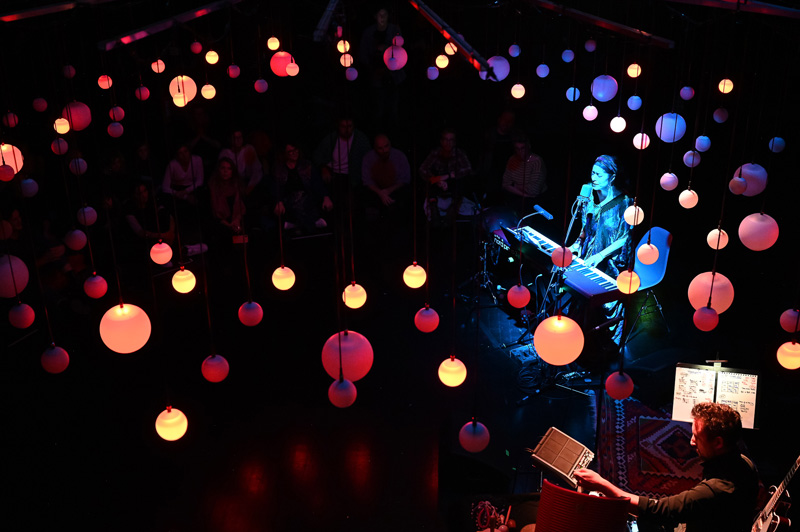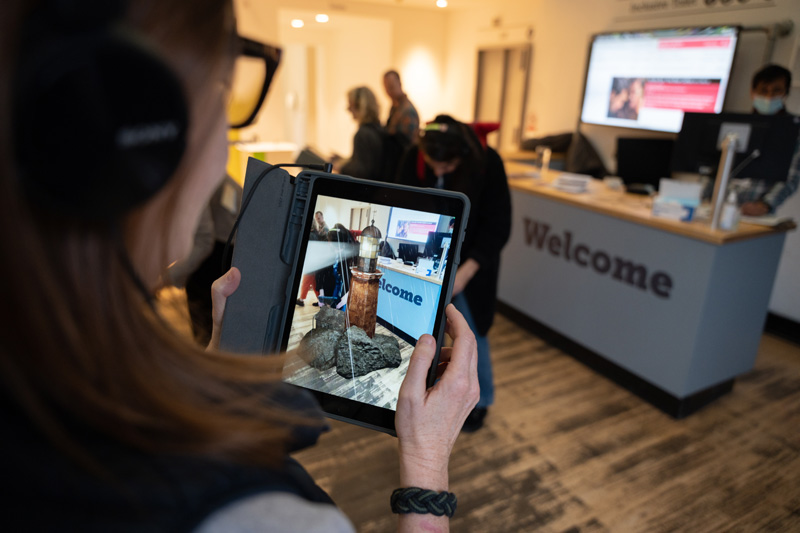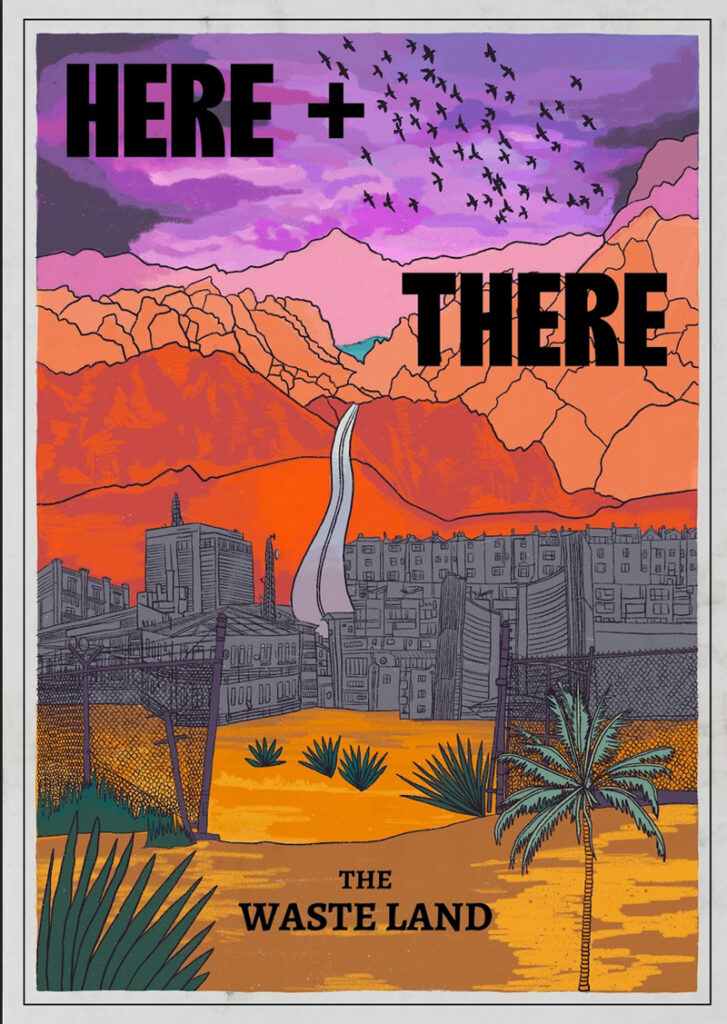The mission of Bristol + Bath Creative R+D has been to bring together creative networks in Bristol and Bath to forge connections, share knowledge, create opportunities and drive innovation. As the project nears its conclusion, Emma Clegg asks its director Jon Dovey what has been achieved…
Bristol + Bath Creative R+D is a £6.8 million collaboration designed to raise the bar for the region’s creative industries. With funding from the Arts and Humanities Research Council (AHRC), the five-year programme, running from 2018 – 2023, has aimed to forge connections and partnerships in Bristol and Bath, sharing knowledge, creating crossovers and even greater opportunities in what’s already one of the most vibrant clusters in the UK.
The cluster incorporates Bath and North East Somerset, Bristol and South Gloucestershire, an area represented by the West of England Combined Authority (WECA). The size of the creative industries sector in this region is significant – including 7,000 business and 50,000 people in work – making around £2 billion for the regional economy, and it is one of WECA’s key economic development areas.
Jon Dovey, Director of Bristol + Bath Creative R+D and Professor of Screen Media at UWE Bristol, breaks this down: “Creative industries are full of small companies dotted all over the place, many with as few as 4 – 12 people. They don’t have the visibility that more traditional industries have, so we wanted to aggregate those companies, and give them a network for working together.”
This collaboration between UWE Bristol, Bath Spa University, the University of Bath, the University of Bristol and digital creativity centre Watershed is the first-ever involving all four universities.
We have an inventive, innovative creative environment and that will carry on manifesting itself as young people come out of the creative education system…
“The project began with three questions: how best to ensure inclusion and diversity? What were the future technologies that would make a difference, and what are the new ways to reach audiences in the future?” explains Jon. The next stage was to ask new businesses about the things they were working on that would benefit from research.
Jon says that academic research is more connected than it was: “Over the last 10 years we’ve been led towards a different kind of research where we work with partners all the time. Our region is already recognised outside London as an important national centre for this kind of work, which universities can support. This money and this R&D (research and development) project allows us to create a little experimental corner of that landscape.
“UWE, for instance, is a partner with Watershed, the Arnolfini and Spike Island, and its campus is a crucial part of supporting the city’s cultural offering and developing relationships with important creative businesses in the city. Our arts faculty is a big part of our teaching offer as well, so as arts and technology move closer and closer together it makes sense for us to develop those kinds of relationships with business partners who are at the cutting edge – frequently more so than we are, because they are in the market and have to respond quickly to what’s coming up.
Bristol + Bath Creative R+D: how it worked
The project focused on five Pathfinders, representing blocks of R&D investment. “Each one linked to a particular type of creative industry, and each had a group of people – from industry partners to academics – who we funded to go away and think, talk, research and come up with new ideas. And we used that to put out a call for prototype projects.”
Once funding was agreed with a company, a producer was assigned and they would work with the teams, acting as a sounding board, chasing the process, being an inspiration and a connector. “We want this money to be the start of this journey, not the end of it. We want to support the companies to develop their market offer, get further investment, and achieve the greatest success,” says Jon.
Achieving inclusivity was crucial, because creative and technology industries aren’t known for their social diversity. “If you look at where the creative industries and creative technologies meet – degree level education, usually white, often male – it’s very prescriptive. We ran a project, Creative Workforce of the Future, where we got money from WECA and we gave placements to people from different backgrounds, and talked to companies about inclusion and what it meant.
“We learnt that offering, say, £50K to a company was quite a lot of money for a new start-up, so we started the Trailblazer Fund, which focused on awards of between £5K and 10K. This allowed us to make lots of smaller investments, to respond to different kinds of people less established in the industry, and to spread our resources more widely.”
Another Pathfinder, Here + There, aimed to find new ways of creative set-ups working internationally. “Immersive theatre company Raucous is a great example,” says Jon. “They partnered with a Canadian company and came up with a story about a women whaler who lives in a lighthouse in the middle of the Atlantic. It’s regional, but it’s also global because it’s about whales and ecology, and it didn’t involve getting on a plane, and the performance happened in real time and online. So they pioneered a new form of global entertainment in performance, as well as working on their sustainability imperative. It’s important to have the confidence to know that we don’t have to connect internationally via London. We can go directly from local to global.”
Bristol and Bath: an effective collaboration
How have the respective projects fitted within Bath and Bristol? “I’d say the work we have commissioned has reflected each city’s characteristics. Connectivity between the creative industries and universities in Bristol was already quite well developed, but at the same time Bath has particular strengths that fitted well with many of our projects and the two cities have amazing complementary offerings. The Pathfinder on Amplified Publishing, which considered all the ways content is being produced, was very much driven by the Bath community because the publishing industry has a strong history there.
Bristol and Bath are two different cities united by a combined authority, but Jon says it’s crucial to work together. “The WECA development and their strategic role in the development of the region means we need more of a combined offer between the two cities because that is one of our routes into government, routes into policy,” says Jon.
Looking ahead, Jon is optimistic: “We have an inventive, innovative creative environment and that will carry on manifesting itself as young people come out of the creative education system. The involvement of the universities, the city and WECA with the creative industries isn’t going to stop. The University of Bristol has a £30 million project called My World where they are working with similar partners and developmental goals and that conversation will carry on. I’m confident that the future development of the creative industries in our region will continue to grow. This is an exciting area that has a lot of potential.”

Above: Caro Sealey Circle, Vilk Collective, Squid Soup
VILK COLLECTIVE
At its core Bristol based Vilk Collective are creative duo Roxana and Peter Vilk, both musicians and award-winning filmmakers, who met in Bosnia just after the war. Conflict was a backdrop to both their childhoods. Roxana grew up in Iran and her family fled when the Iran/Iraq war started. Pete was born in London but his parents grew up in the old Czechoslovakia and fled when the Russian tanks invaded in 1968.
At the heart of their artistic approach is collaboration, and they have created works globally with a variety of communities, organisations and artists. The themes of heritage, identity and migration are often central to their work. Most recently, they received prototype funding from Bristol+Bath Creative R+D to work with renowned installation artists Squidsoup. They spent research time at Trinity Centre in Bristol (where Roxana was Associate Artist) exploring spatialised sound composition.
They experimented with the AudioWave technology, working to fuse Squidsoup’s expertise of creating sound and light artworks, with the live performance and compositional skills of Vilk Collective. Out of these new approaches they co-created a new immersive piece of work called Circle/دایره. This intimate live performance combines original music, mesmerising lights and unique choreography, exploring themes of identity and migration. The audience is invited to experience the piece live in the moment and they can be anywhere around the circle. Focus can be switched from the live music, to the light and sound of the Orbs, the movement of the live dancers and the synergy between them. They have performed sold out shows of Circle/دایرهدat Trinity Centre, Egg Theatre Bath, Bristol Beacon and Arnolfini Bristol.
Vilk Collective is touring the show to St Mary’s Fratton, Barbican Plymouth and Freedom Festival Hull. If you are interested in finding out more, contact: roxana@vilkcollective.com
RAUCOUS
Raucous is a female-led immersive company that melds live performance, digital technology, projection mapping, film, AI, binaural sound, AR, scent, music and film to create uniquely immersive, sensory experiences. They have mounted two large-scale shows in Bristol; The Stick House in 2015 and Ice Road in 2017, and last year produced a binaural online experience, The Prick & The Sting.
Raucous also works as an R&D hub, investigating new ways of working that they share with the industry and sew into their work.
During the pandemic, Raucous developed a relationship with Canadian immersive theatre company, Lost & Gone.
Both companies are interested in durational storytelling, where the story starts before the show and continues afterwards, and together they developed the idea of a simultaneous trans-Atlantic production, The Lantern Room. In this, despite the time difference, the audience will affect the storytelling in the other city.
Raucous’ work explores what theatre can become when live performance meets digital technology. Thanks to funding from Bristol + Bath Creative R+D and ACE, Raucous has been able to build a new immersive story that they could test using live performance, bone-conducting technology, augmented reality and binaural sound to build the rich, visceral story world of a female whaler.
Sharon Clark, Creative Director at Raucous, said: “This funding has enabled us to push our work further creatively and allowed us to connect our work with international colleagues. We have been able to explore how theatre audiences in Canada and the UK can be part of the same immersive experience even though an ocean separates them.” | raucous.org.uk

Above: Raucous | Photography by Jon Aitken

BRISTOL IDEAS: HERE + THERE
“Since 1995, Bristol Ideas have run 2,000 Festival of Ideas events, published 10 books, organised specialist regular festivals on economics and the future of cities, and created and managed a festival devoted to city films,” explains Andrew Kelly, Creative Programmer at Bristol Ideas.
“Central to our work has been looking for solutions to the challenges we face. These challenges are international in scale and the ideas for the solutions we need will come from many places.
“I’ve always wanted to bring together an international ideas festival to help with this search. The Here + There funding from Bristol + Bath R+D provided a great opportunity to start on this and we grasped it fully.
“We worked with Aké Arts and Book Festival in Lagos and Toronto International Festival of Authors in Canada. Much of the work was R&D – which will pay many dividends in the years to come – but we wanted to show also the potential of working together with new work. 2022 was the centenary of T S Eliot’s great poem The Waste Land and we used this in our work as the parallels of the poem – which came out of war and crisis and a pandemic – are depressingly like today.
“We challenged 12 poets, four from Canada, four from Nigeria and four from the UK, to write poetry responding to The Waste Land. All 12 poems were published online, in a special zine designed by Grace Kress, in print in Aké Review, and presented live and digitally in our three cities.” | bristolideas.co.uk
Featured image: Lost Horizon | Photography by Jon Aitken



